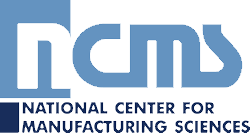Historical Articles
May, 1954 issue of Plating
QUESTION BOX—reader’s questions of general interest ...
Q. 175. What method of etching is used on hard nickel deposits to continue plating with safety, once parts hare been withdrawn to check thickness with a micrometer and then reimmersed in the plating bath?
A. The following procedure has been used success fully after micrometer thickness measurements although it is, of course, preferable not to withdraw and handle such work, if at all possible.
Alkaline cleaner dip and scrub with pumice. Cathodic alkaline cleaner 1-2 minutes and scrub.
Rinse, followed by a second 1-2 minutes in an alkaline cleaner.
Rinse, then etch in 22 oz/gal H2SO4 at 20 amp/sq ft, anodically for ten minutes.
Increase the anodic etching current to 200 amp/sq ft for 2 minutes.
Direct current etch in 22 oz/gal H2SO4 at 200 amp/sq ft for 2-3 seconds.
Rinse and nickel plate.—A. D. SQUITERO.Q. 176. What type and grit numbers of grinding wheels are recommended to grind hard nickel plate on crankshafts—normal wheels seem to pack up with the nickel?
A. It would appear that not so much the type and grit number of the grinding wheel is important in the problem as is using the wheel with the correct coolant. The use of a coolant made of 75 per cent mineral seal oil and 25 per cent kerosene is suggested. Also suggested would be a highly soluble sulfurized oil coolant. If neither one of these coolants solves the problem, then, as a last resort, it may be necessary to go to a grinding wheel treated with rosin to give the free cut and non loading features required.—HOWARD J. McALEER.

